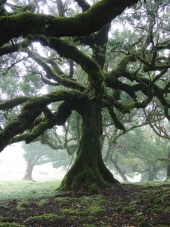In what ways do you see fungi and mushrooms integrating with permaculture?
How do / have historically fungi and mushrooms figure(d) into
indigenous design methodologies (proto-permaculture)?
How do fungi and mushrooms figure into
resourceful design methodologies? By "resourceful design" I am thinking about Sepp Holzer's permaculture and
Joseph Timothy's Page Ranch.
How do you see fungi and mushrooms being integrated into
permaculture earthworks design (ie.
Yeomans' Keyline Design)?
How do fungi and mushrooms figure into
permaculture ethics, principles and domains as outlined by David Holmgren?
How do you integrate fungi and mushrooms into
your own permaculture design process(es)?
What are your favorite "
low-tech" and / or "
no-tech" ways of integrating fungi and mushrooms into your permaculture design (eg. spore slurries)?
How do you see fungi and mushrooms
integrating wholistically in all our design processes: from apiculture, to art (eg. mycopigments), to biocontrols (eg. entomopathogens), to endophytic mycobiomes, to food and medicine, to industrial applications, to mycoremediation, to mycorrhizal symbiosis, to textiles, and beyond...?
The challenge I set forth for this thread is to attempt to describe and / or show as many ways possible that fungi and mushrooms can integrate into our permaculture designs... :-)







